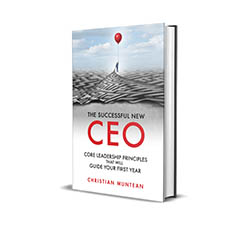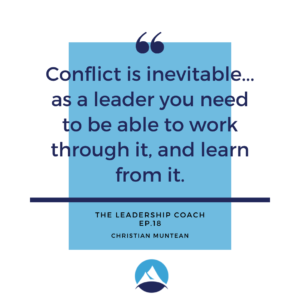How to Build a Simple Strategy That Will Make a Major Difference

 Erika is the CEO of a small furniture factory. Along with quality furniture – they are a social enterprise providing job training and employment for at-risk youth and young adults. She’s new to the role, hired at the beginning of the year.
Erika is the CEO of a small furniture factory. Along with quality furniture – they are a social enterprise providing job training and employment for at-risk youth and young adults. She’s new to the role, hired at the beginning of the year.
When COVID-19 and the shutdowns began in March of 2020, she responded well. She rallied the troops, focused efforts, got creative, streamlined operations, and kept pushing forward. Due to her anticipatory thinking and willingness to take decisive actions –they will produce a small profit this year. More important to Erika, she was able to take care of the employees. There were able to avoid layoffs.
However, when she looks ahead to 2021, she feels a sense of dread. Much of this year was driven by, “Ok, we can gut this out for a short stretch.” After a few repeat cycles of hunker downs and staff quarantines, it’s harder to be optimistic. What she thought was a hard sprint has morphed into an endurance race. With no clear finish line.
Her employees are feeling this. A few are young parents struggling with how to get their kids through virtual school. Now in the holiday season, others are feeling the disconnect from family more acutely. She’s noticing uncharacteristic behavior in some of her team – a sense of despondency. A lack of energy. An edginess. To add to this, Erika just received news that a major client has decided not to renew their order this year. She’s not sure how to replace the revenue in the short term. But if she doesn’t, there will have to be lay-offs – in time for Christmas or the New Year.
Three other major clients are indicating that they’ll continue doing business – but keep delaying the negotiation process. This is not something they’ve done previously. She’s no longer confident that they’ll be able to continue to “outrun” the economic consequences of COVID-19. Her board has asked her to submit her strategy for the coming year. They’d like to see growth.
What is strategy? And why?
At this point in the game, most CEOs think about retreats. They know a retreat isn’t a strategy. But that’s what comes to mind.
With COVID 19 concerns, it won’t even be possible for Erika to organize a retreat. It might be possible to meet for couple days via Zoom…which sounds miserable. Regardless – a retreat sounds like more of a burden than a solution.
Then they think about plans, something that answers the question, “What should we do?” They look ahead at 2021. They talk, they speculate. But they can’t get a read. Their crystal ball is broken.
Erika wonders, “Why develop a plan for 2020? No one knows what will happen. It’s just a waste of time.”
What is a strategy? Simply – it’s a framework for decision-making. You might develop it at a retreat. It will benefit from having a plan that describes implementation. But plans can (and often should) change. Your strategy doesn’t need to. Your strategy should help you quickly shape plans – and then reshape them as needed – all while keeping you on target to accomplish your larger goal.
Strategic Thinking: A Core Executive Skill
Leaders often see themselves as strategic thinkers. But in practice, many are reactionary. Many decisions are based on how they get pushed or pulled. Some get stuck in “firefighting” and managing on-going drama. Others are highly attuned to recognizing opportunities. They are able to jump and catch them as they go by.
In other words, most of what we call “leadership” is really a reaction to an external stimulus. It’s not leadership at all. Neither approach tends to build towards a specific goal. Neither has a clear framework for decision making towards that goal.
The ability to think strategically is often viewed as esoteric and, perhaps, a complicated practice. In fact, strategy and thinking strategically should be very simple and tangible. My best clients develop and follow clear strategies. Sometimes at retreats. Sometimes not.
They often develop plans, but those plans change. And those changes occur within the strategic framework. A framework that everyone understands – so changes within it are readily understood and easily pivoted to.
What would this framework look like for Erika and her board? Especially considering that there are current challenges as well as so many unknowns in 2021?
The Three Components of Good Strategy
It’s Aligned: Good strategy defines the kinds of decisions an organization will make in alignment with its values and furthering its vision. It may also define a single, specific strategic focus, accompanying priorities, and key behaviors that are perceived to be needed or desired to accomplish the above.
In short: Values > Vision > Strategic Focus > Focus Priorities > Key Behaviors
It’s Clear: Good strategy is clear. The best strategy is often very concise. This is especially true for small or mid-sized organizations. It should be easy for anyone to reference and use at a glance. The strategies that are actually utilized are often found on the front of binders or taped to a wall over a desk. They aren’t thick documents lost in someone’s filing cabinet.
It’s Simple: Easy to read. Easy to use. Easy to follow. While there might be real challenges in terms of implementation, all efforts can be focused on “How do we do this?”, not “What should we do?”
Erika’s Strategy
Erika gathered with her management team to develop a strategy that they could recommend to the small board of investors who owned the company.
Here’s what they came up with:
For People Furniture – 2021 Strategy
We Value: Quality Work, Growing People, Financial Self-Sufficiency
Our Vision: To be the supplier of choice for American made, high-end furniture in the Pacific Northwest. To make a positive, direction-setting difference in the lives of at-risk youth.
2021 Focus: Double Down on Financial Self-Sufficiency – Grow our business, keep our people employed.
Focus Priorities: 1) Keep our team healthy. 2) Replace wholesale clients. 2) Develop a new direct-to-consumer retail line. 3) Better inventory management to reduce down-times and overstock. 4) Incentivize operational efficiency, prioritizing productivity, and reducing waste. 5) Offer personal financial management classes to employees.
Key Behaviors: All senior management participates in business development until goals are met. Weekly inventory check. All management on-time for meetings. Weekly staff meetings will be focused and kept under 20 minutes. COVID health and safety plans will be supported and modeled by management.
This strategy will benefit from more planning. However, it is clear, simple, and aligned. While plans may need to change, the strategy provides guidance, simplifies decision-making, and keeps the company on-course through any number of changes. It helps produce purposeful, forward momentum. In the event of either a crisis or an opportunity, it reduces the time lost on dithering about “what should we do?”
Do you have a strategy for 2021? If you did, how would it help? What do you need to do to put your strategy in place?
Take good care,
Christian
P.S. Thinking Strategically is one of the Seven Essential Executive Skills discussed in my new book, The Successful New CEO. Pick up your free copy here.
Find the value of your company with my free assessment tool: The Value Builder System
The Value Builder System™ is a 13-minute online questionnaire that evaluates your business on the eight factors that contribute more to its attractiveness and value. These factors are scored on a scale of 1-100. Businesses that score over 80 are likely to command 70%-100% higher value than others.
The Successful New CEO – FREE BOOK OFFER
As an executive coach, I’ve found that the experiences for new executives (or experienced executives in new roles) tend to touch on familiar themes. No one’s situation is the same. But there are common principles that, when followed, do guide executives to success. I introduce those core principles in my new book, The Successful New CEO. I’d like to give you a free copy (just pay shipping)!
The book is divided into four parts:
- Becoming an Executive: Leaders can only lead out of who they are. How do you become the kind of person who successfully and gracefully inhabits this role?
- Seven Essential Executive Skills: The skills that earned you this new role may not be the ones that you need in the role. What are the key leadership skills that become even more important at the executive level?
- Leading Your Leadership Team: More than likely, you’ll be leading other leaders. How do you lead a confident, effective leader? How do you build a team out of leaders?
- First Things: Where do you start? How do you quickly build credibility and engagement? What is too fast or too slow?
The goal of The Successful New CEO is to help you quickly gain the confidence of your team, successfully address the issues you will discover, score early wins, and set a course for a fruitful future.
If you’d like to see how this book will benefit you or someone you know, I’d like to make it available to you for free! Click Here.
In my podcast, THE LEADERSHIP COACH, we explore effective, high impact and enjoyable leadership. We talk about personal development and the attributes that all effective leaders possess. I interview other leadership experts who share their knowledge and tips to help you build the confidence to lead and learn the habits of good decision-making.
Opportunities
Free Resource: How To Accomplish More Without Doing More is a workbook I created to walk leaders through a process of helping you own your calendar, liberate your time, and still get more done. Download it for free!
Executive and Leadership Coaching: Do you feel overwhelmed? Are you not getting the results you expect from the effort you are putting in? Do you find yourself facing similar challenges time and time again? Would you like to change specific ways of relating or reacting? If you would like to experience predictable, measurable growth Contact me.
Profitable Exit Strategy Workshop: Are you a business owner or partner? Are you over 55? Are you starting to think about exiting your business or active management in the next 3-5 years?
- Are you curious about what your business might be worth?
- Would you like to discover the specific steps you need to take to increase its value and become highly attractive to a buyer?
- Are you planning on handing it over to family or employees and you want to ensure long-term success?
If so, contact me now
Article Categories
Popular articles

Download my free 10-page eBook:
How To Accomplish More Without Doing More:
Eight Proven Strategies To Change Your Life
Discover how to save eight hours during your workweek-even if you're too busy to even think about it. The resource every maxed out executive needs.
